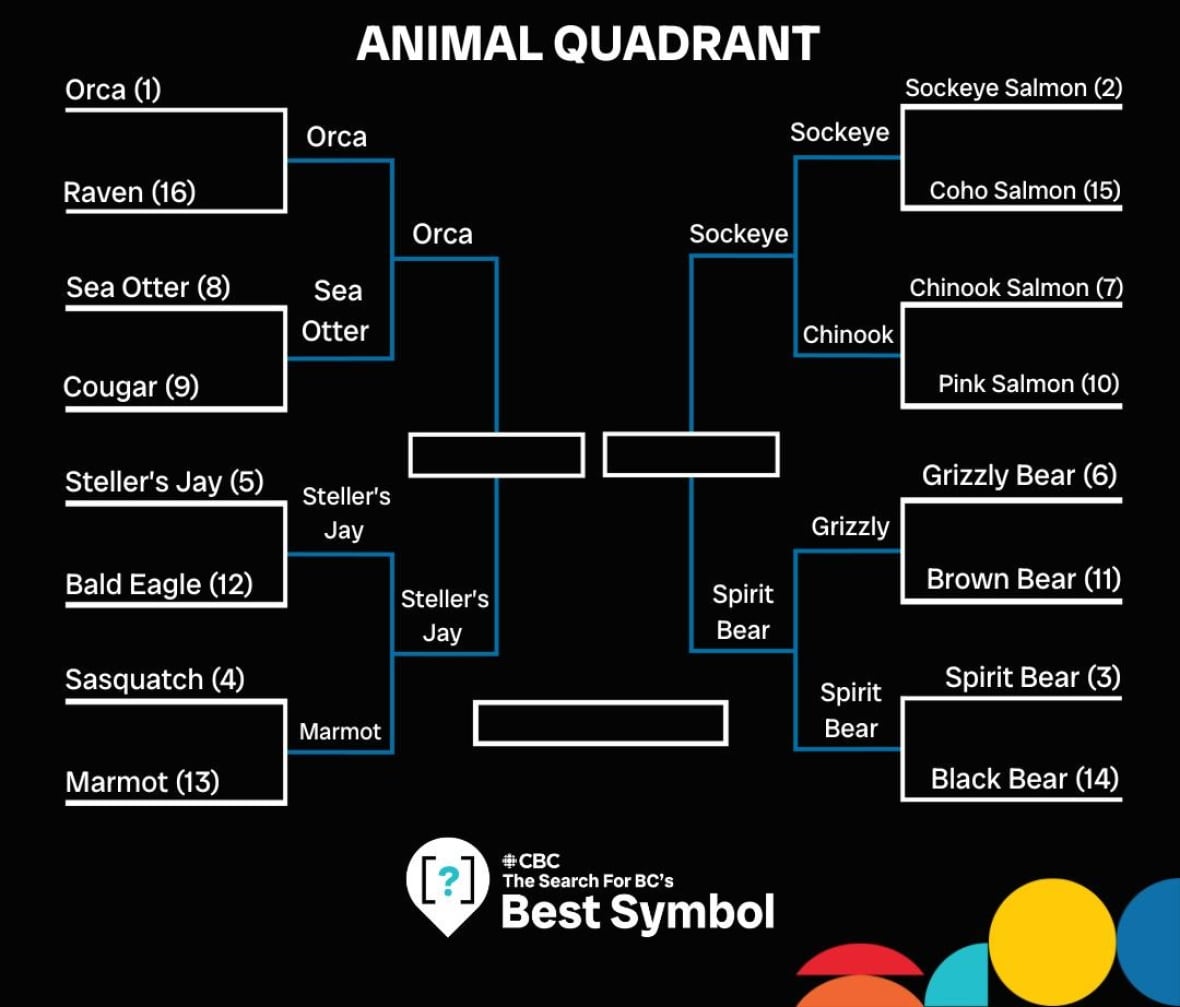Search for B.C.'s Best Symbol: Animal Semifinals
It's orca vs. Steller's jay and sockeye salmon vs. spirit bear in the first day of the round of 16
If you were to have asked settler British Columbians what their favourite symbol of this area was 100 years ago, few would have said orcas.
"They were seen as an animal that was quite terrifying and something to be feared," said Andrew Trites, director of the University of B.C.'s Marine Mammal Research Unit.
"Even the name they were given, killer whales, that should be a red flag right there," he said.
Because of some dangerous encounters with humans and the fact that whales and humans were often viewed to be in competition for salmon, headlines like "Killer Whale Spreads Fear" and "Criminals Of Ocean" were seen in B.C. newspapers in the 1940s and 1950s. At one point, there was the idea of using machine guns near Seymour Narrows to shoot them.
But according to Jason Colby, a UVic historian who wrote Orca: How We Came to Know and Love the Ocean's Greatest Predator, public perception of orcas among settlers changed rather dramatically in the 1960s, as they began to be put in captivity and studied.
"Even though that practice is rightly criticized these days, it was really the spark that transformed our relationship with them," he said.
"When we brought them into our urban spaces and started experiencing them as individuals … it was a powerful factor in shifting the way people not just thought about orcas, but how they thought about how we treat all wildlife in the region."
In that sense, according to Colby, the orca became a proxy for B.C.'s burgeoning environmental movement — including the campaign to stop holding them in captivity — and with that became a symbol of something far greater than its own species.
Or put another way, symbols often become powerful not because of what they do, but how the culture around them changes.
"The shifting economic value or environmental values, the shifting priorities about how we interact with the local landscape and seascape," said Colby.
"I think it's a pretty powerful symbol of how we changed in terms of our values and priorities, and it remains so today."
Yet despite the shift among settler attitudes over the past 100 years, many coastal First Nations have deep, longstanding and sacred relationships with orcas.
According to Nuu-chah-nulth First Nations' teachings, orcas are the guardians of the sea, and for the Tsleil-Waututh people, the whales are a source of spiritual power and teachings. In 2018, when an orca mother carried her dead calf through the Salish Sea for 17 days, the Tsleil-Waututh Nation called it a "direct communication" from the whales to remind them of their responsibilities to the lands, waters and beings.

From 64 symbols to just 16 left
While the orca may be a powerful symbol, can B.C.'s official bird, the mighty Steller's jay, produce a big upset?
The Search for B.C.'s Best Symbol has reached its third round, and with it, the number of daily matchups this week goes down to two.
- Monday: orca vs. Steller's jay, spirit bear vs. sockeye salmon.
- Tuesday: totem poles vs. Nanaimo bars, Cowichan sweater vs. Northwest Coast art.
- Wednesday: red cedar tree vs. Okanagan cherries, gold nugget vs. Dogwood.
- Thursday: B.C. flag vs. Terry Fox statues, Ogopogo vs. treehuggers
The winners will advance to the quarterfinals, which begin next week.
Voting closes at 10 p.m. PT — may the best symbols advance!


